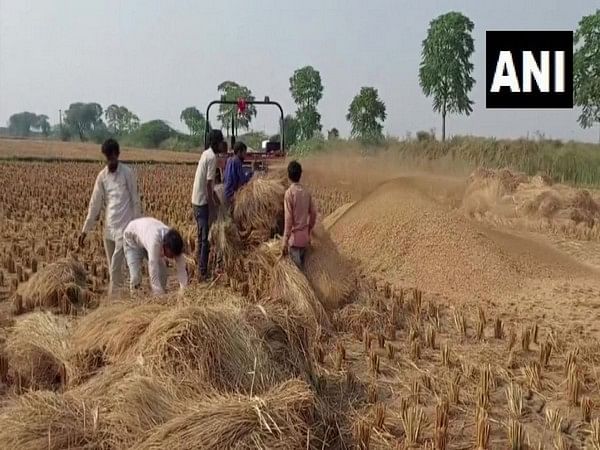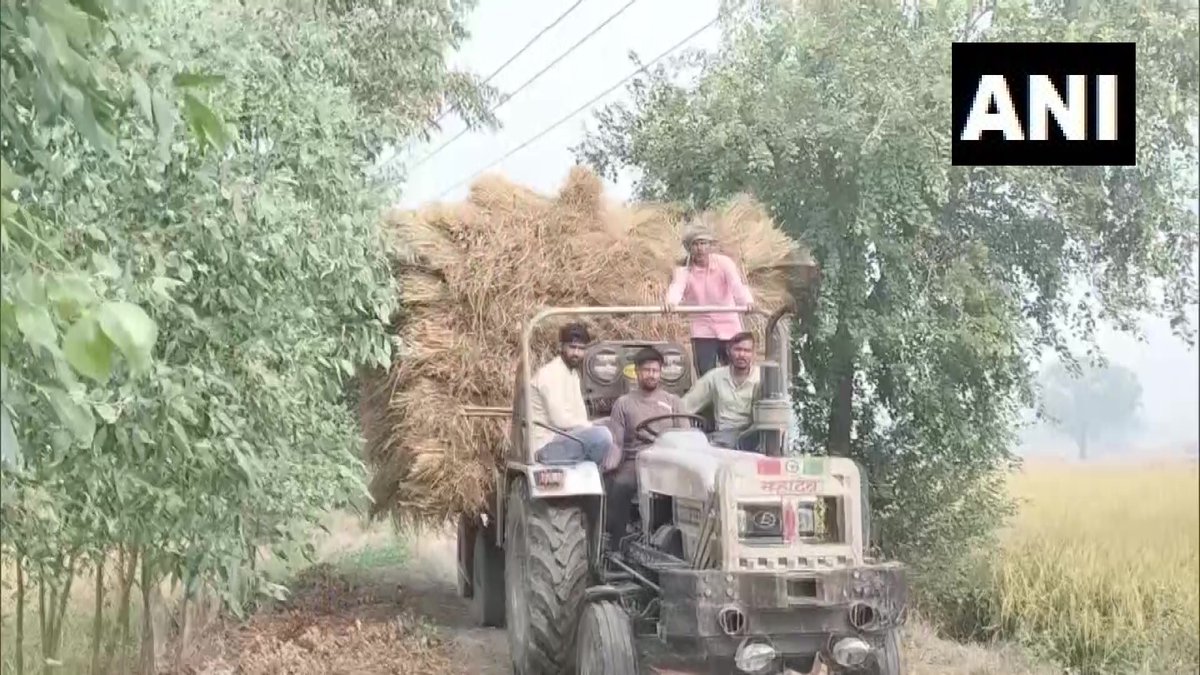Rohtak (Haryana) [India], November 5 (ANI): Incidents of stubble burning have come down in Haryana as farmers are adopting alternative means of managing agricultural residue.
The issue of stubble burning becomes a hot topic of discussion, especially at the onset of winter with the deteriorating air quality in Delhi NCR every year.
Farmers in Haryana’s Rohtak opt for converting stubble into fodder, reducing the number of stubble-burning incidents in the state.
“We will not burn stubble now. It led to pollution. The government is buying our stubble at Rs 5,000 per acre. We can now buy fertilizers and seeds with the money,” a local farmer told ANI.
Deputy Commissioner of Rohtak Yadav Yashpal said that stubble burning in Haryana has been reduced significantly in the past 3-4 years due to the efforts made by the state government.
“Haryana government’s efforts in the last 3-4 years of providing alternate uses to farmers have led to the reduction in stubble burning cases by 23-24 per cent. Environmental Compensation charge will be imposed on anyone engaging in any fire incident. It is standard practice,” said Yadav Yashpal.
Incidents of stubble burning have come down also in Ambala due to subsidy on super seeder by the state government.
A farmer said, “We are getting Rs 1000 per acre. The stubble works as manure in the field, which increases the yield. The subsidy has been given on super seeder.”
The air quality in Delhi continued to remain in the ‘severe’ category on Saturday, for the third day in a row, even though a slight improvement was noted in the Air Quality Index (AQI) of the national capital, which stood at 431 this morning.

Also, areas in the national capital region (NCR) area – Noida and Gurugram at 7 am this morning recorded an AQI of 529 and 478 respectively both in the highly toxic ‘severe’. Dhirpur in West Delhi recorded an AQI of 534.
On Friday, SAFAR (System of Air Quality and Weather Forecasting And Research) said that stubble-burning accounted for 34 per cent of Delhi’s particulate matter (PM) 2.5 pollution.
AQI from 0 to 100 is considered as good, while from 100 to 200 it is moderate, from 200 to 300 it is poor, and from 300 to 400 it is said to be very poor and from 400 to 500 or above it is considered as severe.
People of Delhi and the National Capital Region (NCR) complained of choking and ‘eye burning’ due to smog and air pollution leaving people gasping for breath.
Speaking to ANI, Dr Suresh Kumar, Medical Director of Lok Nayak Jai Prakash Narayan Hospital, Delhi said, “Number of patients suffering from Asthma, respiratory problems and blood pressure has increased. Polluted air with increased PM 2.5 presence exacerbates breathing problems in affected people. 10-15 people and 2-3 children coming every day to the hospital.”
Delhi government has closed primary schools in the city in view of air pollution from Saturday. (ANI)
This report is auto-generated from ANI news service. ThePrint holds no responsibility for its content.










